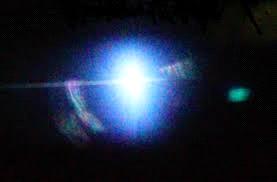Ammon News - AMMONNEWS - Leaving politics aside, the governments of Israel, Jordan, Iran, Turkey, Pakistan, Cyprus, Egypt and the Palestinian Authority are cooperating so that by the middle of 2017, their scientists work together on SESAME, the first Synchrotron-light for Experimental Science and Applications in the Middle East.
The synchrotron light source is an accelerator machine that generates intense light beams for advanced scientific and technological research and is used for basic science in a variety of fields, from nanotechnology to understanding the structure of medications, layers in old paintings, archeological dating of findings, the structure of proteins and materials, and many other fields.
Located in the Jordanian city of Allan 35 kilometers northwest of the capital of Amman, it will be the first synchrotron light source and first major international scientific center in the Middle East and the region.
Prof. Eliezer Rabinovici, of the high-energy physics group at the Hebrew University of Jerusalem’s Racah Institute of Physics, will speak about the unique and promising project at a session open to the public on Thursday at 8 p.m. at the Bloomfield Science Museum.
Rabinovici, a theoretical physicist who is vice president of the SESAME council and second in command to its president, Sir Christopher Llewellyn Smith of England, told The Jerusalem Post on Sunday that Jordan was a logical, central place for the facility. The director-general of SESAME is Dr. Khaled Toukan, chairman of Jordan’s Atomic Energy Commission.
Smith previously was the director-general of CERN, the European Organization for Nuclear Research that is one of the world’s largest and most respected centers for scientific research.
SESAME, in addition to its acronym, derives from the “Open Sesame” command to unlock a treasure trove in the tale of Ali Baba and the Forty Thieves.
Most member countries pay annual membership fees of some $500,000 each; because of difficulties caused by sanctions against it, Iran didn’t transfer its share in recent years, “but it claims to recognize its debt,” said Rabinovici. Israel’s Science, Technology and Space Ministry will pay this country’s share, and the Council for Higher Education’s Plan and Budgeting Committee together with the Treasury have contributed an additional $5 million for the project’s infrastructure.
SESAME aims to facilitate international scientific research in the Middle Eastern region. Many leading countries such as the US, the UK, France, Japan, Italy, Germany, Kuwait and others have an observer status in the organization.
“The story began over 20 years ago,” said Rabinovici. “We expect it will start functioning next year.
There are about half a dozen such facilities in the US, plus more in many developed countries, such as England, Germany and France, but this will be the first in the Middle East.
“The long time it has taken to bring the facility to its present status was at least useful for forming significant users’ community bases in the region,” he said. “It is good news that they will be ready.”
Israel voted in favor of the location in Jordan, said Rabinovici, who was chosen unanimously as council vice president, even by the Iranians.
“Israeli scientists in the field are quite good, but if it had been established here, many scientists originating in countries that don’t have diplomatic relations with Israel would have not participated in the project. Egypt bid it, as did Turkey, Iran, Armenia and the Palestinian Authority.
“Israeli scientists have special permission to go to work there by crossing the Allenby Bridge; it will take about 90 minutes to reach the Allan facility from Jerusalem,” said Rabinovici, an expert in theoretical string theory.
“Israeli scientists are treated like other researchers, however, it is crucial to establish near the facility, in Jordan, a guest house for scientists, including Israelis.”
Prof. Ada Yonath of the Weizmann Institute of Science, who received the Nobel Prize in Chemistry in 2009, used a synchrotron abroad to do the work on RNA that earned her the award.
The European Union has also been granted observer status at the SESAME synchrotron, allowing scientists from across Europe to apply for jobs and carry out research at the facility, which is due to be commissioned in the middle of next year. The EU, which will be represented at meetings by a civil servant from its research directorate, will not be a voting member in SESAME’s management structure.
Nonetheless, the EU has by now contributed over €10 million for the construction of the facility, and Italy has also contributed its share, giving several million euros for the cause.
*JP








 comment replay
comment replay 